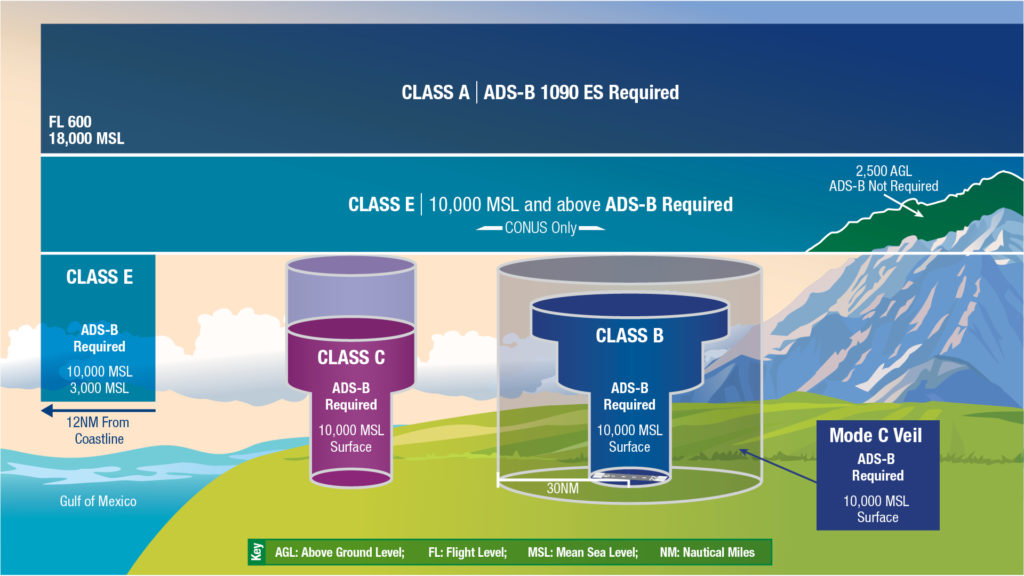The Federal Aviation Administration (FAA) carefully designates different types of airspaces based on several critical factors: required safety levels, aircraft traffic density, operational requirements, and both national and public interest. It is imperative for all pilots to understand the different airspace types, and how to navigate through them.
Class A Airspace
Class A airspace spans from 18,000 feet to 60,000 feet above sea level. All aircraft operating in this airspace must follow Instrument Flight Rules (IFR), unless given authorization to do otherwise, and all aircraft must maintain constant communication with Air Traffic Control (ATC). This high-altitude airspace serves as a crucial passage for commercial aviation and requires special authorization for any deviation from IFR operations.
Class B Airspace
Class B airspace surrounds the busiest airports, reaching from the ground up to 10,000 feet. Often described as an “upside-down wedding cake,” its shape widens as altitude increases. Aircraft must receive clearance from ATC before entering Class B airspace and must follow ATC instructions while within its boundaries. This airspace often has strict weather restrictions to ensure safe departures and landings.
Class C Airspace
Class C airspace surrounds moderately busy airports. It consists of a 5-nautical-mile inner ring from the surface up to 4,000 feet, and a 10-nautical-mile outer ring extending from 1,200 feet to 4,000 feet. While clearance is not required to enter, pilots must establish and maintain radio contact with ATC when operating within this airspace.
Class D Airspace
Smaller airports operate within Class D airspace, which extends from the surface to 2,500 feet above airport elevation in a single layer. This structure still requires pilots to establish and maintain communication with the control tower while in Class D airspace, ensuring coordinated operations in these less congested areas.
Class E Airspace
Class E airspace covers all controlled airspace that is not specifically classified as A, B, C, or D. Aircraft operating under Instrument Flight Rules (IFR) must adhere to ATC instructions, while Visual Flight Rules (VFR) aircraft have more flexibility in navigating the airspace. The boundaries of Class E airspace can vary, but generally begins at 1,200 feet above the ground and extends to 18,000 feet. It then resumes above 60,000 feet.
Controlled Airspace vs. Uncontrolled Airspace
Class A,B,C,D and E airspaces are all considered controlled airspace. These are airspaces with defined boundaries where ATC services are actively provided. The purpose of controlled airspace is to ensure safety by minimizing the risk of mid-air collisions and facilitating safe takeoffs and lands. Additionally, controlled airspace provides security by ensuring that all aircraft near airports are accounted for and identifiable.
In contrast, uncontrolled airspace – also known as Class G airspace – does not receive active ATC services. Pilots operating in uncontrolled airspace are responsible for their own navigation and collision avoidance. Pilots in uncontrolled airspace must still follow standard operating procedures and maintain communication with other aircraft via Common Traffic Advisory Frequencies (CTAF).
Superior Flight School operates out of Class D airspace. Are you ready to begin your flight training and become a superior pilot? Contact admin@superiorflight.com for more information on how to start.

